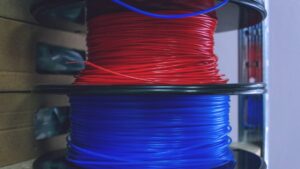
A Look at the Different Densities of 3D Printing Materials
There’s so much to learn about 3D printing materials. Come and find out what to look for when examining the different densities of 3D printing filaments.
844-810-1385
Did you know that you can print with flame-retardant 3D filament? This quality is a valuable one—here is what you need to know when it comes to the types of 3D filaments that are flame retardant.
Some 3D printing applications require flame-resistant materials. They’re more thermally stable than other materials, which means they’re less likely to catch fire or burn. These materials are appropriate for end-use parts, replacement parts, tools, and fixtures that may be exposed to combustion. There are several options to pick from, each with its own advantages.
Some materials are flame resistant by nature. Thermally stable polymers, on the other hand, may limit print performance and are also expensive and complex to produce. This is why you’ll find flame-retardant chemicals in materials—they delay the pace of combustion, reduce smoke, and prevent dripping.
UL 94, the Standard for Safety of Flammability of Plastic Materials for Parts in Devices and Appliances, helps certify flame retardancy. In essence, it determines which types of 3D filaments are flame retardant. Underwriters Laboratories in the United States published this flammability standard. The following certifications are listed in order of increasing retardance:
Looking for these designations is one of the best ways to determine which filaments are flame retardant. Run a few tests and determine the best fire retardant filament for yourself!

There’s so much to learn about 3D printing materials. Come and find out what to look for when examining the different densities of 3D printing filaments.

Those interested in 3D printing have a lot to learn on how to use the system properly. Find out what you need to know about 3D printing and humidity levels.

3D printing has many variables that both beginners and experts need to know. Find out what effects temperature has on 3D printer filament.
Get professional insights, industry news, and our latest deals